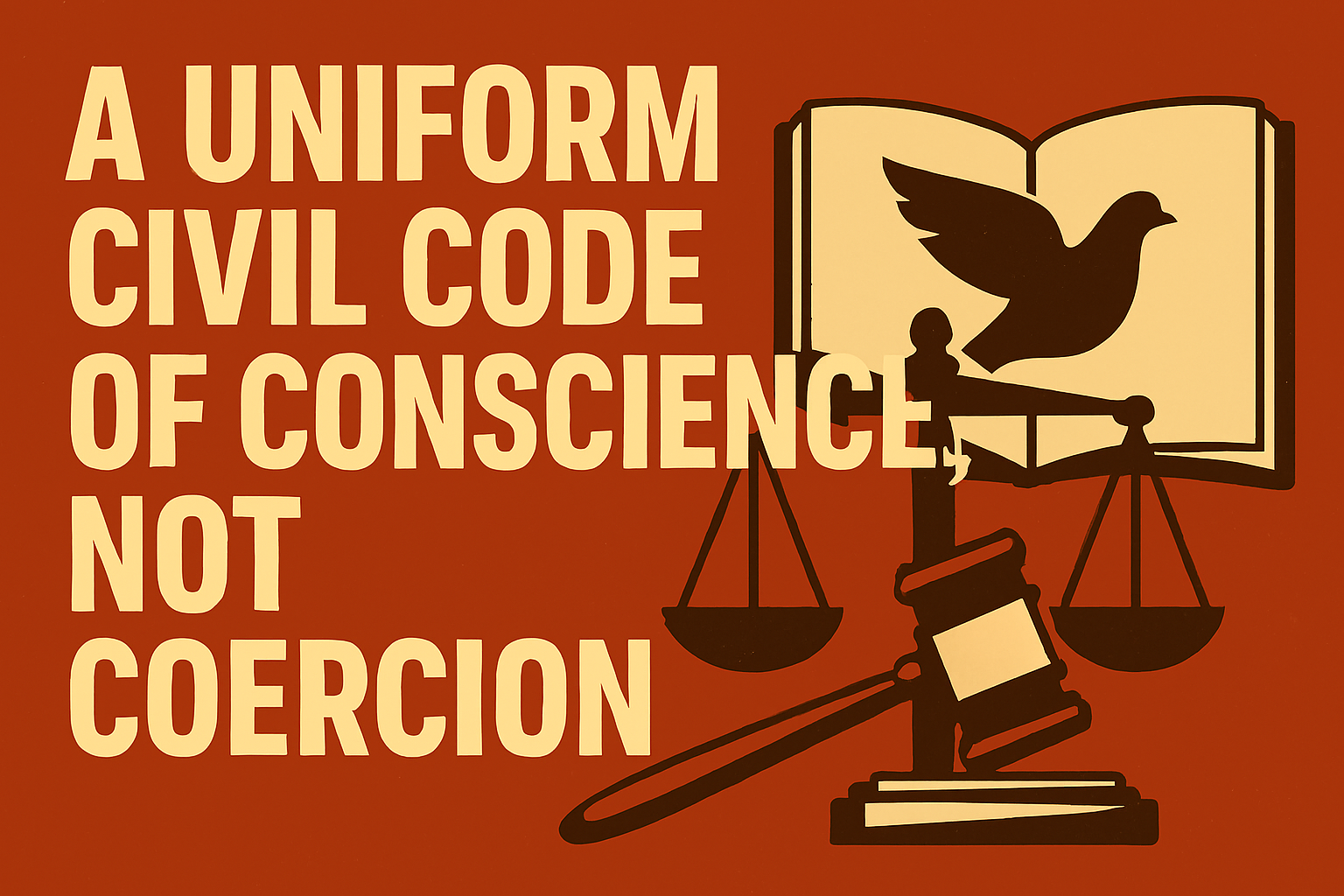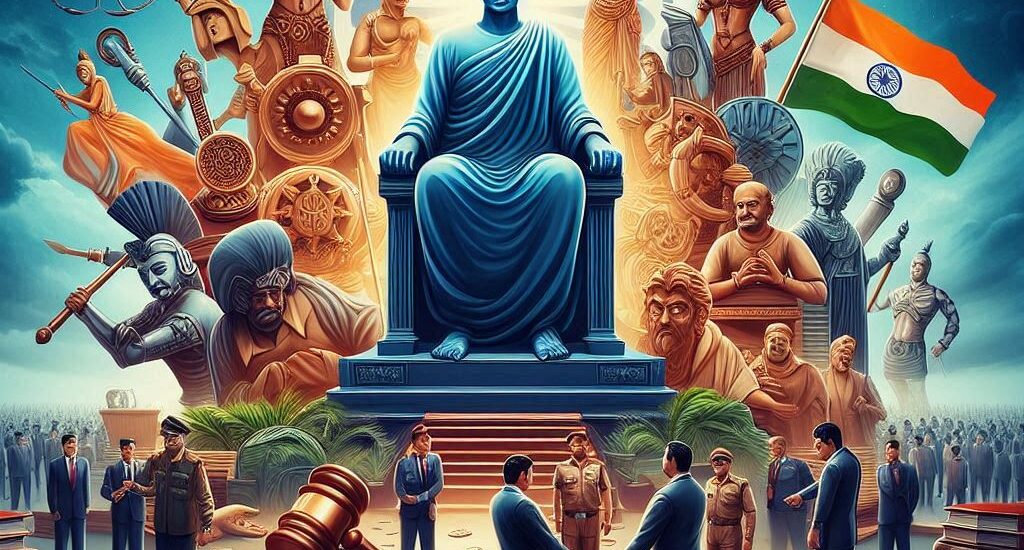



There is no such as clear definition provided under any statute that what the actual uniform civil code is. Article 44 of the Constitution of India provides that, “The State shall endeavor to secure for citizens a Uniform Civil Code throughout the territory of India.” This code aims to promote national integration by removing ideological inconsistencies. The goal is to create a unified venue for all communities to discuss issues currently covered by different personal laws. Despite 77 years of independence, our lawmakers have refused to enforce this rule. It simply refers to a single universal law that governs all personal laws, including marriage, divorce, maintenance, adoption, and inheritance, as well as property rights. It integrates all of these personal laws into a single set of secular laws that will apply to all Indian people, regardless of the group or community they belong to.
Several Supreme Court and High Court decisions stressed the importance of implementing this code in dealing with the complexities of various personal laws. In Jorden Diengdeh v. S.S. Chopra, the court held that “the law relating to the judicial separation, divorce, and nullity of marriage is far from uniform.” Surely, the time has come for a complete reform of marriage law and the establishment of a uniform law applicable to all people, regardless of religion or caste; we believe that the legislature should intervene in these matters to provide for a uniform code of marriage and divorce.”Another landmark case was John Vallamatton v. Union of India, in which a Kerala priest challenged the constitutional validity of Section 118 of the Indian Succession Act, claiming that it discriminated against Christians by imposing unreasonable restrictions on the donation of property for religious or charitable purposes through a will. The court deemed the clause unlawful and advocated for the creation of a Uniform Civil Code. The code seeks to promote national cohesion by removing ideological conflicts and supporting a single civil code. The case emphasizes the need for a more inclusive and effective civil code.
In the 1985 case of Md. Ahmed Khan v. Shah Bano Begum, also known as the Shah Bano case, the Supreme Court urged Parliament to create a uniform civil code. In this case, The wife filed a case under Section 125 of the Code of Criminal Procedure for claiming the maintenance after he issued triple talaq pronouncements. The Supreme Court ruled that Muslim women had the right to get maintenance from their husbands under Section 125. However, Article 44(3) of the Indian Constitution remains unresolved. However, the Rajiv Gandhi government overturned the Shah Bano case verdict by the Muslim Women (Right to Protection on Divorce) Act 1890, which curtailed the right of maintenance of Muslim women.
Another case Sarla Mudgal v. Union of India addressed the question of whether a Hindu husband who converted to Islam could legitimately marry his second wife. The court determined that this would be an abuse of personal laws. Converting to Islam and marrying again does not end a Hindu marriage under the Hindu Marriage Act of 1955. As a result, doing so is an infraction under Section 494(5) of the Indian Penal Code of 1860. The judge proposed creating a standard civil code and reconsidering Article 44.
In Lily Thomas v. Union of India, the Court emphasized the importance of the Uniform Civil Code. Leaders must create a societal climate that encourages acceptance of change, rather than pursuing personal advantage. The term “uniform” refers to similar laws for all, including equality and gender justice, rather than the same laws for everyone. However, In Pannalal Bansilal v. State of Andhra Pradesh, the court ruled that while uniform laws are desirable, enacting them all at once can harm national unity and integrity. A gradual and progressive approach is recommended. In Maharishi Avadhesh v. Union of India, the Supreme Court dismissed a writ petition for a common Civil Code, citing legislative authority.
Article 44 puts an obligation on the state for its implementation, The implementation of this code is always controversial owing to its interference with the rights of people i.e. religion. There must be some reason why the constitution makers put this code as a Directive principle and not as a right and made it justiciable, for they left the decision to future generations. However, After ruling on similar cases and emphasizing the necessity for UCC, the Supreme Court deferred to the legislation to address the issue. The ambit of UCC concerning constitutional aspects includes
two things: national consolidation and gender justice. If we look from a broader lens, the object behind the implementation of UCC centers around promoting national integration by removing ideological inconsistencies. In the constitutional debate, K.M. Munshi highlights the dangers of national consolidation due to various factors. He advocates for the unification of secular life to establish a strong, consolidated nation. This is necessary to ensure that the nation is not just a nation by its words but also through its way of life and law.
If seen through the national integration lens it might prove its worth, but setting aside the religious identities and minority rights will not be correct so far as secularism is concerned. The interplay of secularism, group, and religious identities plays an important and equal role in unity and integrity by removing ideological inconsistencies. Hindus and Muslims used religious personal laws to regulate their different groupings, frequently to the detriment of women. Legislative action was taken to codify and progressively amend personal laws in order to counter this threat. Regretfully, the reforms’ reach was restricted to Hindu personal laws, which essentially had no practical impact. When UCC presented a case for gender justice, the issue of gender justice gained traction. Alternative resolutions, such as the Hindu Succession Act of 2005, which grants women the same status and rights as men in terms of property and joint Hindu families, were developed by amending the personal law to promote gender justice. The Hindu Marriage Act of 1955, together with its 1976 revision, brought in a reformist and more liberal approach to Hindu divorce law. The Parsi divorce law underwent similar changes in 1988. Men and women could file for divorce under the Special Marriage Act,1954 but this legislation only applied to those who had legally tied the knot in accordance with its provisions. Consequently, the Act’s limitations would not apply to marriages consummated in accordance with religious personal laws. The Dissolution of Muslim Marriage Act of 1939 and religious personal laws gave women the opportunity to file for divorce in accordance with Muslim law. As a result, Indian Christians were the only religious group whose divorce law needed to be changed because it did not give Christian couples in unhappy marriages any more legal recourse than the laws of other religious groups. Christian women experienced substantially worse outcomes. In 2001, the Indian Parliament updated the Indian Divorce Act, expressly to protect the interests of Christian women and bring them on par with women from other faith groups. The updated Act now specifies eleven grounds on which a Christian spouse may seek divorce. A Christian woman may also file for divorce on these grounds and if she can show that “the husband has, since the solemnization of the marriage, been guilty of rape, sodomy, or bestiality.” This amendment harmonizes the nation’s Christian divorce laws with those of other religions. Many civilizations have more unusual legal systems in addition to these well-known ones, such as indigenous law, customary law, religious law, or law unique to a nation’s ethnic or cultural groupings.
In the guise of attaining unity and national integration, their right to practice and manage religious affairs will be at stake, which is provided as a fundamental right. Also Suppressing these different legal traditions or forcing them to adapt into the mainstream legal tradition will not only harm the country’s cohesiveness but also affect the principle of Secularism which is a part of the Basic Structure Doctrine as stated in S.R Bommai’s case.
India is renowned for being unique in that its constitution incorporates aspects of many other nations’ constitutions along with its own customs and culture. It reaches a certain level of constitutionalism not because it contains elements from various nations’ constitutions or because it is too long, but because it has attempted to not only connect with the country’s diverse socio-cultural ethos, but also to integrate them by allowing them to operate within the constitutional framework. Thus, the idea of implementing the Uniform Civil Code is problematic unless an alternative is devised to combine the protection of minority religious identities and practices with the achievement of integration and unity between them.
Article 44; Constitution of India, 1950
Jorden Diengdeh v. S.S. Chopra, AIR 1985 SC
John Vallamatton v. Union of India AIR 2003 SC 2902; https://thelawblog.in/2016/12/21/uniform-civil-code-finding-unity-in-diversity/
Section 118 in The Indian Succession Act, 1925118. Bequest to religious or charitable uses.—https://indiankanoon.org/doc/956021/
Md. Ahmed Khan v. Shah Bano Begum, AIR 1985 SC 945; Section 125: https://indiankanoon.org/doc/1056396/
Smt. Sarla Mudgal v. Union of India, AIR 1995 SC 1531.
Lily Thomas, Etc. Etc. vs Union Of India & Ors. on 5 April, 2000;https://lawbhoomi.com/lily-thomas-case-lily-thomas-vs-union-of-india/#:~:text=Lily%20Thomas%20Case%20is%20noteworthy,wife%2C%20who%20is%20still%20alive.
Maharshi Avadhesh vs Union Of India on 6 April, 1993; https://frontline.thehindu.com/the-nation/uniform-civil-code-clash-of-moral-universalism-and-cultural-pluralism/article67105045.ece#:~:text=Maharshi%20Avadhesh%20vs%20Union%20of%20India&text=The%20petition%2C%20filed%20under%20Article,Act%2C%201986%2C%20as%20void.
K.M. Munshi, 7 Constituent Assembly Debates at 11 (Nov. 23, 1948), available at: http://parliamentofindia.nic.in/ls/debates/(Last Visited on 22nd June, 2024)
See Farrah Ahmed, Religious Freedom Under the Personal Law System (Oxford University Press, UK, 2016).
See Brian Z. Tamanaha, “Understanding Legal Pluralism: Past to Present, Local to Global” 30 Sydney Law Review 375 (2008)
https://www.thelegalyoungster.com/legal-internship/